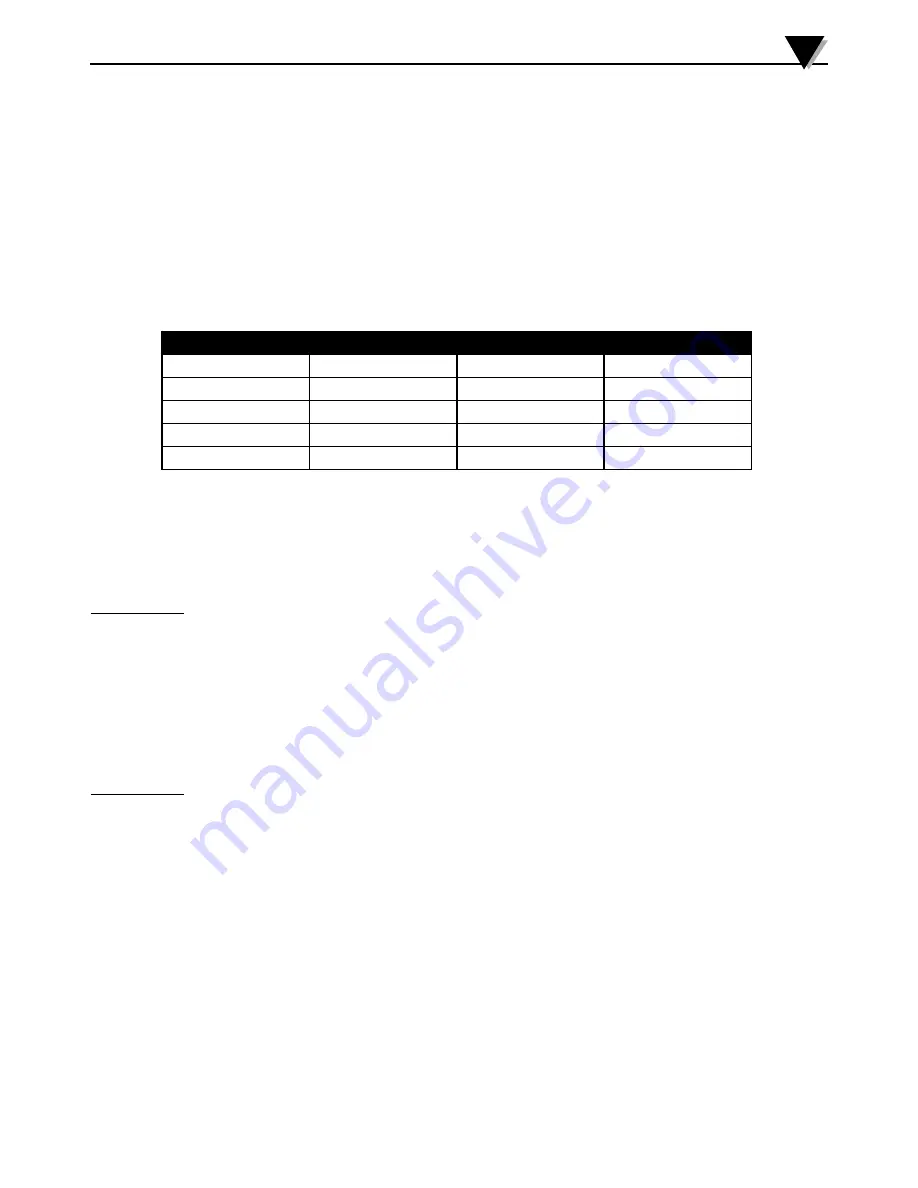
CALIBRATION
Once the transducer has been mounted, and air supply connections finished, the unit’s calibration must be checked before
placing into service.
Note: input percentage refers to the following examples:
M4110/
IP211, EP211 SERIES
0519
A
5
If 4 to 20 mA
If 0 to 10 VDC
If 0 to 5 VDC
If 1 to 5 VDC
0% = 4 mA
0% = 0.00 VDC
0% = 0.00 VDC
0% = 1.00 VDC
25% = 8 mA
25% = 2.50 VDC
25% = 1.25 VDC
25% = 2.00 VDC
50% = 12 mA
50% = 5.00 VDC
50% = 2.50 VDC
50% = 3.00 VDC
75% = 16 mA
75% = 7.50 VDC
75% = 3.75 VDC
75% = 4.00 VDC
100% = 20 mA
100% = 10.00 VDC
100% = 5.00 VDC
100% = 5.00 VDC
Forward Acting
1. Apply the 0% input signal to unit and adjust the “Zero” adjusting screw to the low setpoint output. Turn screw counter-
clockwise to increase output. If there is no change in output, keep turning adjustment screw counter-clockwise until
output begins to rise. It is imperative that the output pressure be closely monitored as turning the zero screw excessive-
ly could damage the flexure.
2. Apply the 100% signal to unit and adjust “Span” adjusting screw until output is at the high setpoint.
3.
IMPORTANT:
On I/P (Current) input models, turn the “Span” adjusting screw counter-clockwise to increase output. On
E/P (Voltage) input models, turn the “Span” adjusting screw clockwise to increase the output pressure.
4. Repeat steps 1& 2 until unit is calibrated.
Reverse Acting
1. Apply the 0% input signal to unit and adjust "Zero" adjusting screw until output reaches the high output pressure set-
point. Turn counter-clockwise to increase.
2. Apply the 100% input signal to unit and adjust "Span" adjustment until output pressure is at the low setpoint.
IMPORTANT:
On I/P (Current) input models, turn the “Span” adjusting screw clockwise to increase output. On E/P
(Voltage) input models, turn the “Span” adjusting screw counter-clockwise to increase the output pressure.
3. Repeat steps 1& 2 until unit is calibrated.
Содержание IP211 Series
Страница 8: ...M4110 0519 IP211 EP211 SERIES A 8 Figure 3...




























